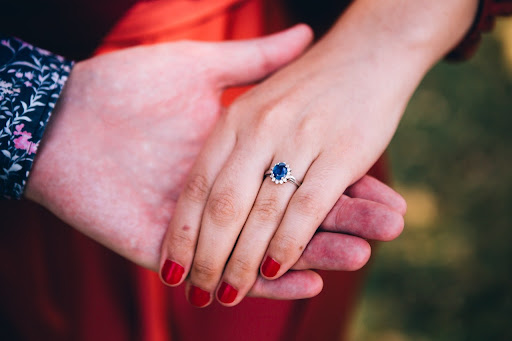Buying a sapphire is less technical than purchasing a diamond. While diamonds are treasured for their shine, sapphires are beloved for their color. It’s essential to buy from a gemstone shop that features high-quality images, so you can accurately judge the sapphire.
Table of Contents
How to Accurately Judge Sapphires for Purchase from A Gemstone Shop
When purchasing most gemstones form A Gemstone Shop, use the Four C’s to gauge their quality. A high grade in color, clarity, cut, and carat means the stone is almost perfect, making it an expensive piece.
First C: Color
For any colored gemstone, color should be the most important factor in your judgment.
Sapphires should have a proper balance between hue, saturation, and tone. Otherwise, the stone will appear gray, colorless, and dull. Higher quality stones are blue, not purple or green.
Sapphire Hue
Yogo sapphires, found in Montana, are said to have the best hue. Their color is described as “cornflower blue” because the cornflower is one of the few blue flowers that don’t contain purple or violet accents. Yogo sapphires also have few inclusions, leading to their high clarity.
Sapphire Tone
Tone describes how dark or light the color is. Very light sapphires look washed out, whereas medium to dark stones appear deep and mysterious. Almost like you’re looking in at the ocean.
Sapphire Saturation
Finally, saturation describes the colors’ vibrancy. Sapphires range from dull/weak to pure vivid.
Grading System
A high-quality colored stone will receive a grade of A, AA, AAA, AAAA, or heirloom.
For example, Several of Diamondere’s designs feature gorgeous AAA-quality or higher sapphire bracelets set between intricate patterns and interlocking posts. A color quality of AAA grade means the stone has a near-perfect saturation and a “true blue” or “cornflower blue” hue.
Keep in mind that there is no uniform grading system for color. It’s best to use your own judgment when picking a sapphire based on color.
Second C: Clarity
It’s nearly impossible to find a sapphire without any imperfections. Jewelers and gemologists judge a stone’s clarity based on how many inclusions it has. If a stone has little to no inclusions, it’s likely heat-treated or fake. Jewelers often heat-treat gemstones to improve their overall look.
Unlike with diamonds, gemstone sellers are only interested in non-magnified clarity. An eye-clean gem implies that the sapphire is clear to the naked eye.
Sometimes inclusions increase the price of a sapphire. A natural blue star sapphire can be worth ten times more than an eye-clean regular sapphire.
Third C: Cut
With diamonds, there are several standardized cuts that make the stone pop. With sapphires and other colored gemstones, you’re relying on the gem cutter to maximize the appearance of each individual gem. A well-cut sapphire is symmetrical, lustrous, and reflects the light.
An experienced gem cutter can make your sapphire stone appear deeper and darker.
While sapphires come in all shapes and sizes, jewelers tend to use round, oval, emerald, and cushion cuts. The cabochon cut, a non-faceted, polished alternative, shapes the sapphire into a convex dome. This oval-like cut is commonly used with blue star sapphires.
Fourth C: Carat
Jewelers measure a stone’s weight based on carats. While measuring a diamond in carats is generally preferred, sapphires are often heavier and will look smaller than diamonds at a similar carat weight. At the same time, sapphires are usually priced lower than diamonds.
If you want a more accurate way to measure the size of your sapphires, use its millimeter diameter. On average, a one-carat sapphire will be 6 mm in diameter.
Some people will purchase a larger stone for less by lowering the grade of the sapphires’ clarity, color, and cut. Heat-treated stones that are nearly black will sell for less but may attract more buyers because of how perfect they look. Large stones will always draw an audience.

Nice Blog! Thanks for sharing this with us. keep sharing…